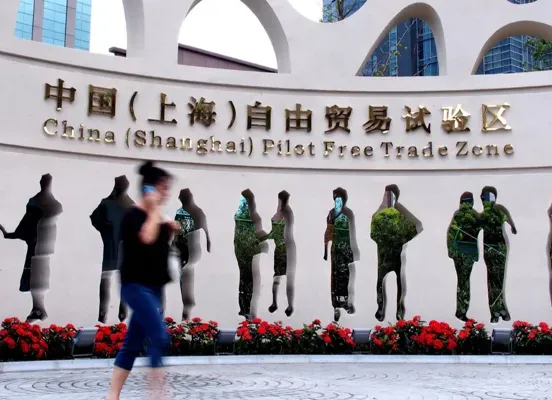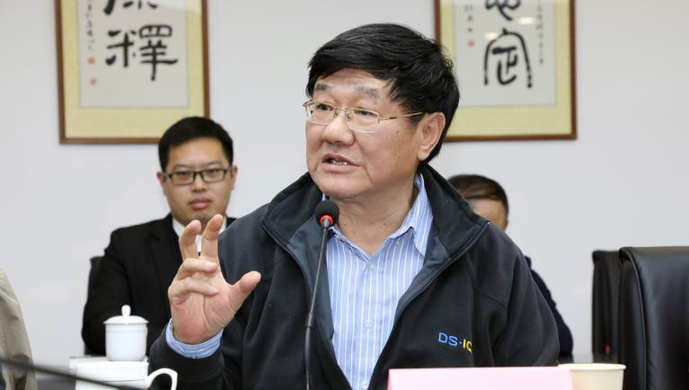Building a best practice site for Xi Jinping's cultural thoughts ⑦|Building a full-process scientific and technological innovation culture
High-level scientific and technological self-reliance is the key to China's modernization. In order to gain strategic initiative in the world's century-long changes, we must firmly grasp the task of building a strong country in science and technology. The report of the 20th National Congress of the Communist Party of China proposed the coordinated advancement of education, science and technology, and talents, revealing the important role of comprehensive innovation of mechanisms and systems with scientific and technological innovation as the core. The Third Plenary Session of the 20th Central Committee of the Communist Party of China further pointed out that in order to deepen the comprehensive reform of education, it is necessary to establish a discipline adjustment mechanism and talent training model driven by scientific and technological development and national strategic needs. At present, the cultural practice of opening up the circulation of education, science and technology and talents still needs to be explored unremittingly, keep pace with the times, and respond to the requirements of the times.
Culture has a unique role. The first is cultivation, which can continuously shape values and change people's behavior and decision-making methods. The second is inspiration. By creating a scientific and creative cultural atmosphere that is positive, pragmatic and innovative, it can not only encourage more people to start businesses, but also continuously expand the capacity boundaries of the education department, forming a positive cycle between using talents and cultivating talents. The construction of scientific and creative culture is not just about popularizing science, but also about who is doing it, why it is doing it, and what type of knowledge and information is popularized. Take the United States before World War II as an example. Its science and technology museum platform has weak public attributes and is open to corporate curators. So the chemical giant DuPont entered and spoke out, using exhibitions of new materials such as nylon to get rid of the stereotype of military enterprises and improve its brand image. It also catered to the rise of materials science in universities at the time with the transformation slogan of "pure science", which promoted more young people to devote themselves to these useful "scientific research" careers.
For my country, the biggest problem of coordinated development of education, science and technology, and talents is the poor transmission of values at all stages of talent growth. The first link is basic education. After the implementation of the "double reduction" policy, there are still heavy schoolwork burdens and excessive pressure for further studies in various places, and the priority of grades is still prevalent. The second link is higher education. my country has been leading the world in the number of scientific research papers published for many years, but the integration of production, learning, research and application is still not smooth, and the conversion rate of university results is low. The third link is industrial research. Enterprises are important subjects of scientific and technological research and the engine of social economy, but the current research and development of enterprises is obviously insufficient, the proportion of entrepreneurial spirit and scientist spirit is unbalanced, the rise and fall of industries and the accumulation of wealth have failed to promote quality historical narratives, and enterprises have always lacked the ability to reach people's hearts with stories, which has slowed down the accelerated formation of the cultural soil for talent cultivation. It can be seen that the failure of value orientation in the process of talent cultivation has led to the situation of "learning without application" and "use without persuasion". Young people facing life transformation are at a loss, and the country has missed many hidden geniuses.
An excellent scientific and technological innovation culture should be based on the value consensus throughout the entire cycle of scientific and technological development, breaking through simple academic thinking, disciplinary vision and wealth worship. To build a whole-process scientific and technological innovation culture, its core should be rooted in the value concept of practice first, industry-based, and history as a mirror. Practice first is guided by the Marxist philosophy, emphasizing the importance of participating in the transformation of the world, using it as a basis, opposing the bookishness that stops at theory, and opposing the egoism that regards academic qualifications as cultural capital. Industry-based is to cultivate talents with the goal of engaging in specific industrial positions, not sticking to the current professional requirements for talents in higher education, and guided by the all-round development of people, fully exploring the breadth and depth of talent quality, so that all kinds of talents can find a place to engage in scientific and technological innovation. History as a mirror is to look at the relationship between science and technology and culture dialectically, not to engage in a cultural "contempt chain", let cultural history and science and technology history mirror each other, and study the development of science and technology in contemporary China as a historical project in detail, and consolidate the historical materials for telling the story of China's scientific and technological innovation.
In the process of building a scientific and creative culture, it is necessary to break through the existing mechanism and system, cross the functional vacuum zone, and reintegrate social resources. In the basic education link, it is necessary to break the boundary between academic education and social education. Academic education is knowledge education, while social education is the socialization process of students finding self-worth in interpersonal relationships. The construction of scientific and creative culture requires more practitioners to speak out, starting from a professional standpoint, to provide content that can promote young people to understand "professions", help them understand the relationship between public interests and scientific and technological research and development, and eliminate the wrong idea that scientific research is to do research behind closed doors. At present, there is a lack of subjects that can be connected in basic education, which requires scientific and creative enterprises to take active actions, provide simple displays and lectures in the visitor center, buildings, or community libraries of the park, and bring the front-line perspective of scientific research to the public. Enterprises can achieve brand effects while spreading cutting-edge scientific and technological knowledge. The government should regard these displays as a beneficial supplement to public cultural services after the scale and influence of these displays reach a certain degree of publicness, and give them certain tax and fee concessions.
In the higher education sector, we need to break the boundaries of disciplinary depth and cross-circle cooperation. The report of the 20th National Congress clearly pointed out that it is necessary to "strengthen scientific and technological strategic consultation" in order to achieve more efficient joint collaboration of scientific research resources, showing the importance of cross-circle cooperation. Therefore, the construction of scientific and technological innovation culture should encourage college students to go out and raise their heads, use cross-professional and cross-disciplinary youth round tables such as workshops, and widely integrate upstream and downstream industries, different technical paths, history and policies, pay attention to the actual needs of the market in advance, focus on trend changes, and cultivate compound talents with more flexible employment. At present, there are few such regular mechanisms in colleges and universities, which requires social education platforms such as museums and libraries to build a stage, and the school Youth League Committee and other organizations to connect, so that more ordinary scientific research youth can face the society and the public, share their scientific research experiences, and find the meaning of deepening their professional cultivation in the process of being seen, heard and respected. This not only cultivates and inspires valuable young talents and prolongs their academic life, but also provides a path for the new generation of talents to glimpse the academic ecology of colleges and universities, helping them to clarify their ambitions as soon as possible.
In the stage of industrial research, we should break the boundaries between humanities and social sciences and science and engineering. The development of science and technology is not isolated, but a highly socialized process, and its development may not have a ready-made model. The study of social and economic history with the development of science and technology as the clue includes not only the chronological sorting of scientific research achievements at home and abroad, but also the investigation of the evolution of economy, policy and mechanism. At the same time, we should also record what is happening at the moment and leave historical materials for future generations. This awareness of regarding the development of science and technology as an extension of the context is of self-evident significance for enhancing the country's independent innovation capabilities and cultural soft power. Most enterprises and academia currently neglect this, which requires a full-time academic team to deeply cultivate the global history with science and technology as the clue, popularize the knowledge of science and technology history at all levels of teacher education, and guide enterprises to summarize and refine their mental journey to form a Chinese story at the level of historical narrative. Enterprises can use these materials as a bridge to contact more talents, and colleges and universities can also actively integrate these stories into the ideological and political courses, inspire students' ambition to innovate and start a business with fresh things around them and more simple ideals, and truly achieve a virtuous cycle of win-win for all parties.
There is no doubt that education, science and technology, and talent are related to each other, but the way they are related is different for countries at different stages of development, and there is no standard answer. China is still a developing country, and should take national conditions as the benchmark to form evaluation standards for education, science and technology, and talent that meet actual needs, without having to always benchmark against foreign countries. We should always emphasize learning for practical use, enthusiasm and dedication, and a historical perspective, so that more scholars and young people dare to innovate, set fair evaluation standards, and help my country's scientific and technological innovation explore its own new path.






